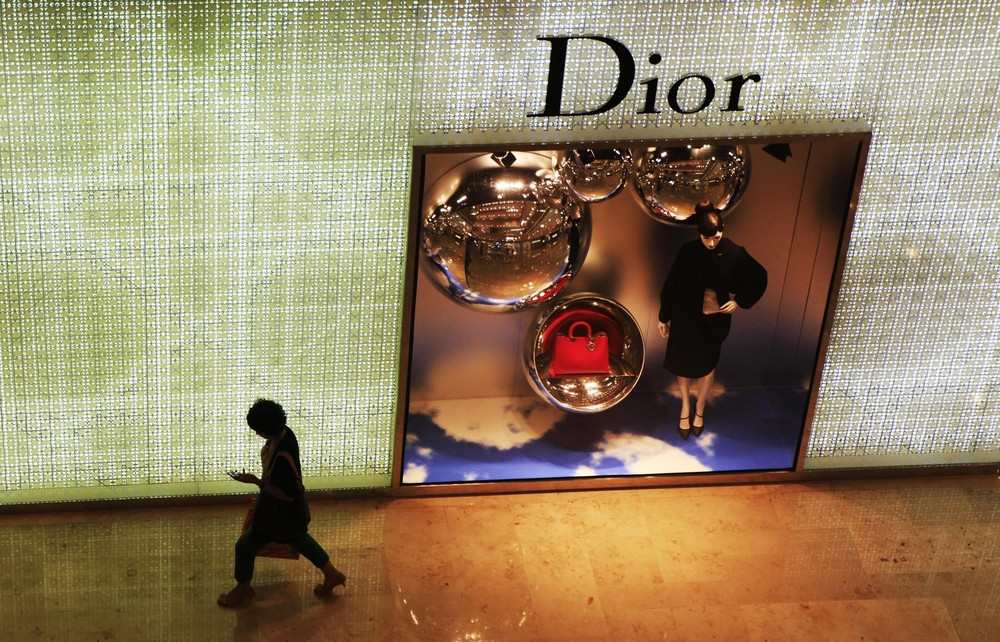Popular Reads
Top Results
Can't find what you're looking for?
View all search resultsPopular Reads
Top Results
Can't find what you're looking for?
View all search resultsHow Chinese sellers of fake Dior are evading a crackdown online
Many of the country's best fakers are now hawking their wares via social messaging networks like Tencent Holdings's WeChat.
Change text size
Gift Premium Articles
to Anyone
C
hina has come down hard on its world-renowned counterfeit industry. Bazaars lined with fake watches, shoes and bags have been demolished in recent years. A new law effective since January 1 promises to slap online retailers with up to 2 million yuan (S$401,100) in fines for bogus goods sold on their platforms.
But Chinese counterfeiters - still the most prolific in the world - have already reshaped their businesses by retreating to even more private spaces online.
Many of the country's best fakers are now hawking their wares via social messaging networks like Tencent Holdings's WeChat.
First they market their offerings at home and globally on platforms like Instagram or ByteDance's Tik Tok. Buyers then order and pay through private messaging apps. Such transactions are arguably "friend-to-friend" and not e-commerce as defined by the new law.
These days a knock-off black Dior saddle bag can go for about US$255 (S$345) on a Chinese social media network.
That's one tenth the US$3,250 price-tag on the real thing, but still pricier than the average high-street bag. It looks and feels real - a smooth, buttery leather with the heft of a true luxury bag. And it arrives in just a day or two, with what are purportedly Dior's engraved box, red ribbon and certificate of authenticity.
The skill of the counterfeiters and their growing ability to leverage global social networks has left Beijing playing whack-a-mole as it attempts to stamp out fake luxury goods.
Even as China's rich become ever more important to marquee fashion houses, the bulk of its consumers remain on the outside: Bombarded by marketing for items they can never afford, and hungry for more affordable knockoffs.
"The income disparity across China's diverse population - coastal versus inland, urban elites versus migrant workers - means that lower-priced goods, including those accused of being fake, will unlikely lose their market in China any time soon," said Fan Yang, an assistant professor at the University of Maryland, who's written a book on Chinese counterfeits.
China's Ministry of Commerce, Dior, ByteDance and Tencent didn't respond to requests for comment.
Read also: Brand owners face nonstop fight against sale of counterfeit products online
Trade war
The difficulties in stamping out counterfeiting in luxury goods shows the challenges Beijing faces in ongoing trade war negotiations as it attempts to assure the US that it can address intellectual property theft - a key grievance of foreign companies.
The global trade in counterfeits will balloon to US$991 billion by 2022 from US$461 billion in 2013, according to research firm Frontier Economics, which includes luxury goods, consumer products and several other categories like pharmaceuticals. China and Hong Kong are by far the biggest source of exported counterfeits, according to the Organization for Economic Cooperation and Development.
On Instagram, counterfeiters often put up a picture of the bag they are hawking without specifying if it is fake or real. They include contact details for Chinese or international messaging services where buyers can follow up to actually make the purchase.
The hashtag used is often that of a real brand - say a #Hermes or a #Birkin.
An Instagram spokesperson said the company uses sophisticated spam detection and blocking systems to fight counterfeiting, and has devoted more resources to the issue over the past year. The company also has tools where buyers can report purchases they are unhappy with.
Luxury demand
Chinese consumers account for a third of the US$1 trillion in global luxury demand. In recent years, global brands have gone from being enraged at Chinese Internet platforms to being willing to working with them, especially as they rely on the portals to reach China's shoppers.
In 2015, Kering, which owns Gucci and Saint Laurent, sued Alibaba for counterfeits it said were being sold on Alibaba's platform. Kering dropped the suit two years later for a "joint taskforce" to fight fakes with the Internet giant.
Alibaba, meanwhile, says its made a serious effort to rid Taobao, its flagship e-commerce platform of fakes.
Read also: Wakai destroys fake goods with Bali Police
Complaints portal
In 2017, Alibaba launched an Intellectual Property Protection platform where brands can file complaints and receive a response within 24 hours. It's also put resources into identifying and proactively taking down listings, a company spokesperson said.
It's now rare to find sellers openly hawking counterfeits on its platforms. But some may occasionally appear by listing unbranded bags and encouraging buyers to contact them privately to complete the transaction.
Its Xianyu platform - a digital "flea market" where consumers can sell used goods - turns up scores of such listings.
Eugene Low, a Hong Kong-based partner at law firm Hogan Lovells, expects China's new legislation will further motivate e-commerce firms to step up their efforts. "They won't want to be the first target of enforcement," he said.
Even so, the grey areas in the new legislation could leave counterfeiters continuing to exploit the loopholes. "How the law would be enforced would be unclear at this time," said Pedro Yip, a partner at consultancy Oliver Wyman.











